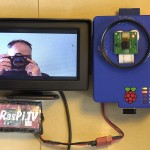
Basic Input/Output with WiringPi 2 What is WiringPi2 and why do I need it? WiringPi2 for Python is an excellent GPIO handling system written by Gordon ‘Drogon’ Henderson and packaged for Python by Phil ‘Gadgetoid’ Howard. It uses Arduino-like scripting language. For simple GPIO work, I still tend to use RPi.GPIO because that’s what I first got started with, but WiringPi is a very good alternative. It currently has more features. One of the reasons (I think) the take-up for WiringPi-Python has been a bit slow, despite its richer feature set, is the lack of […more…]








